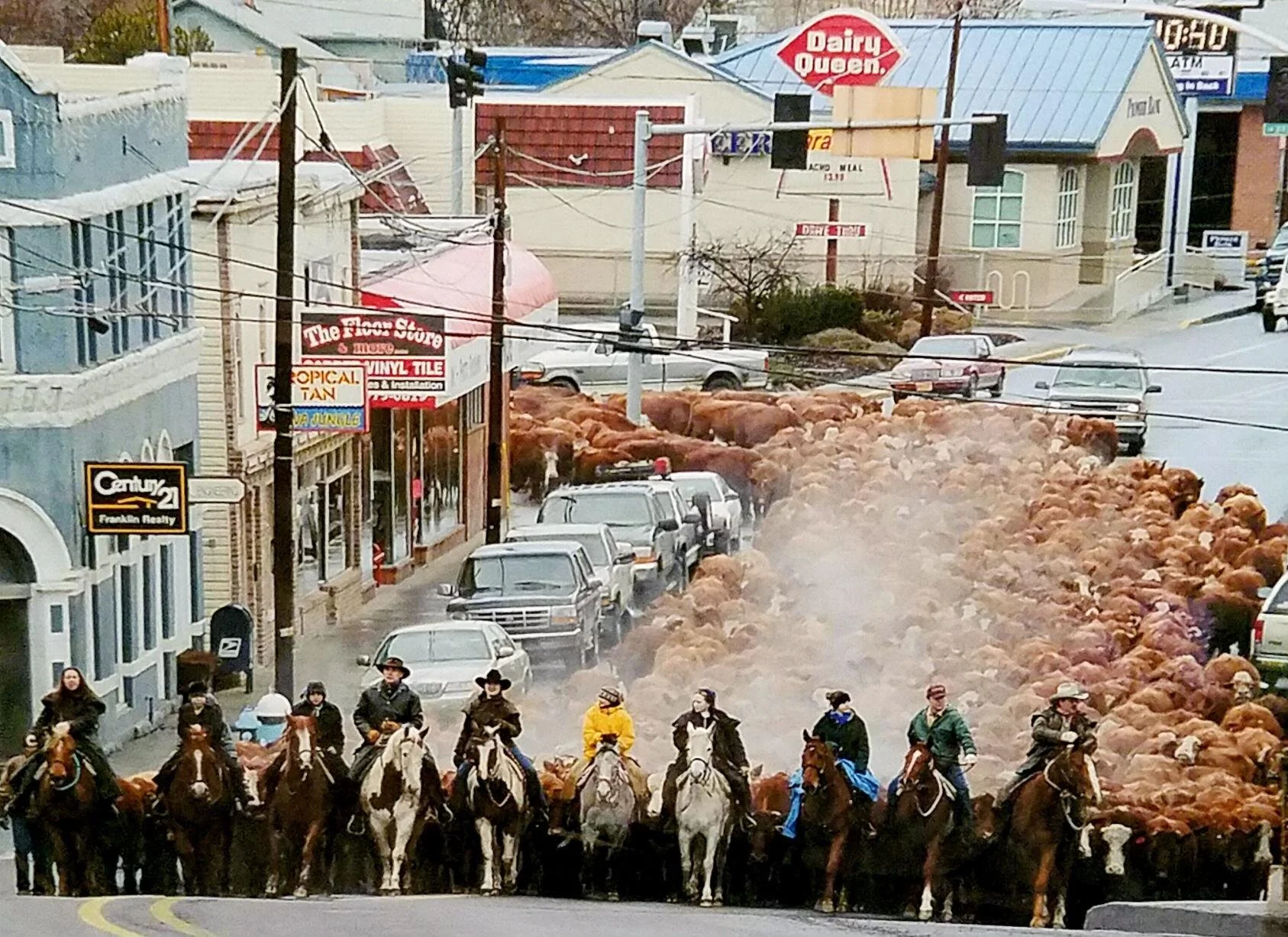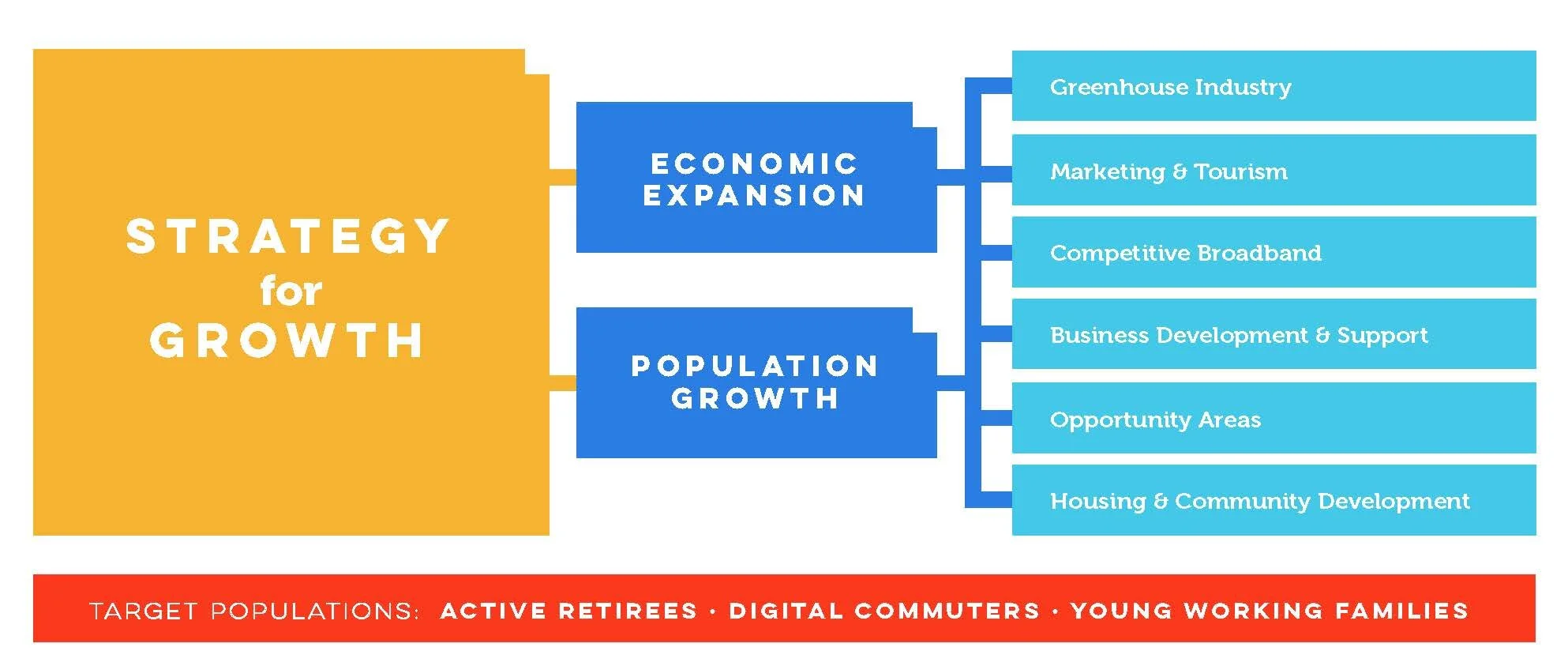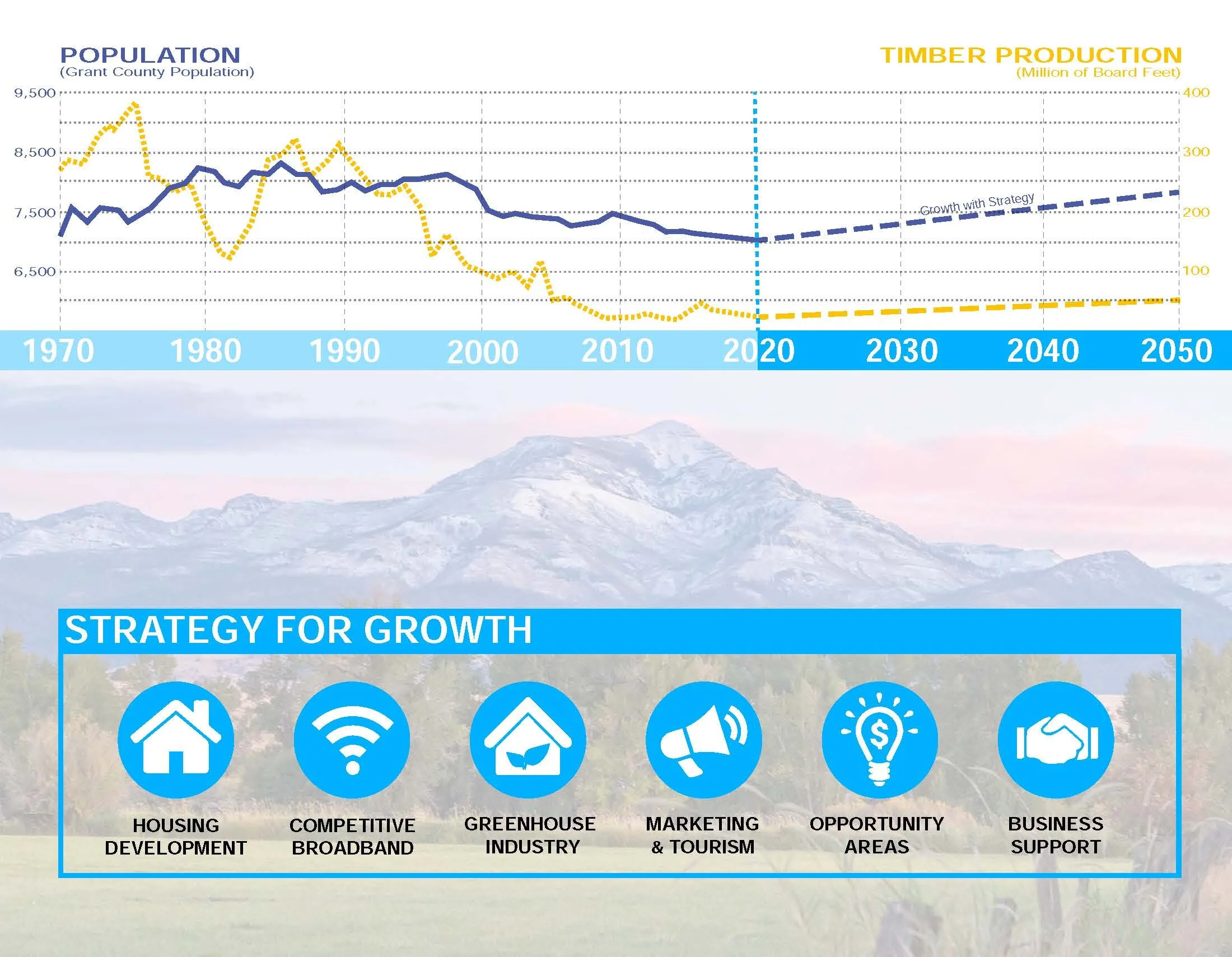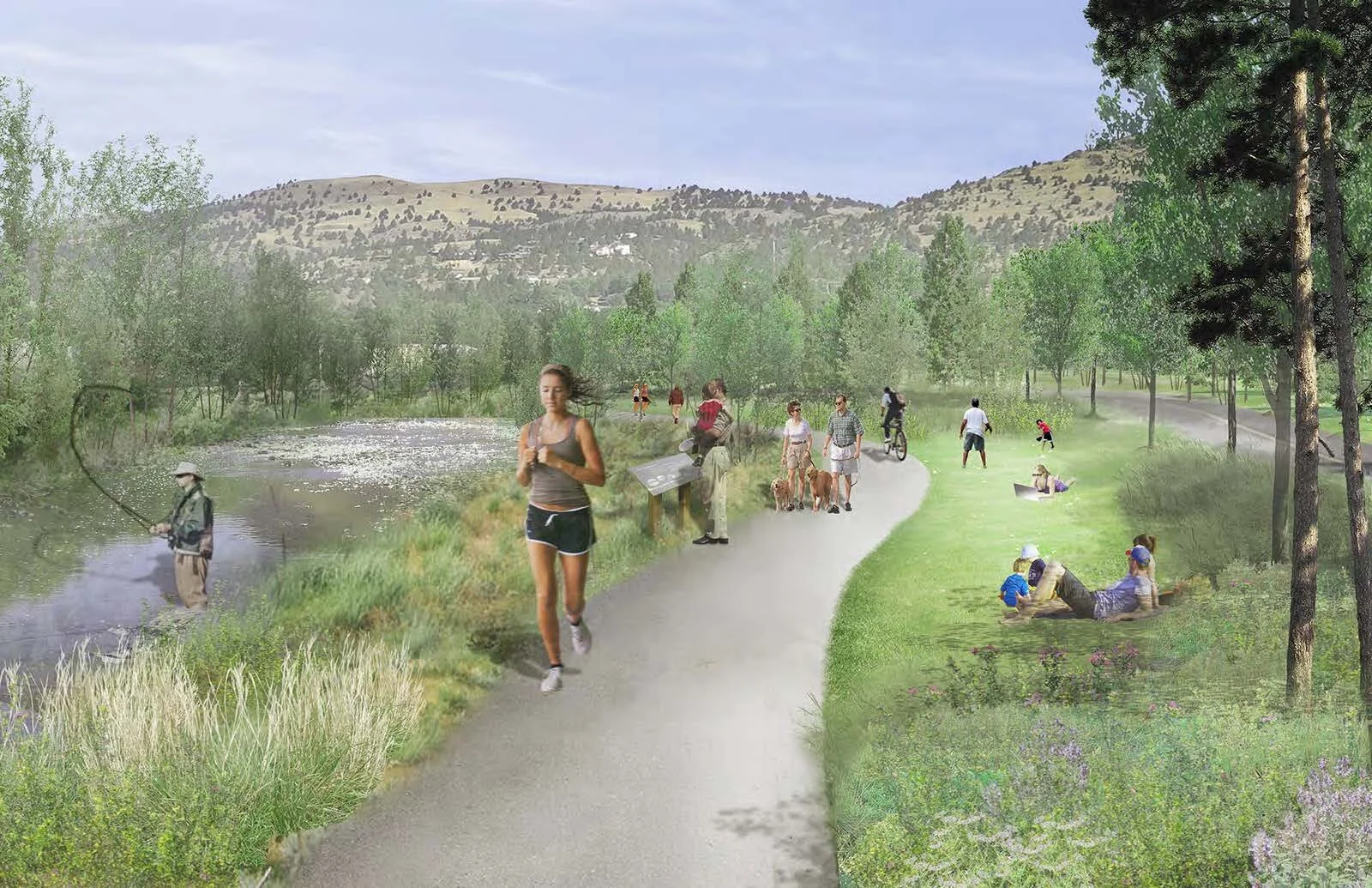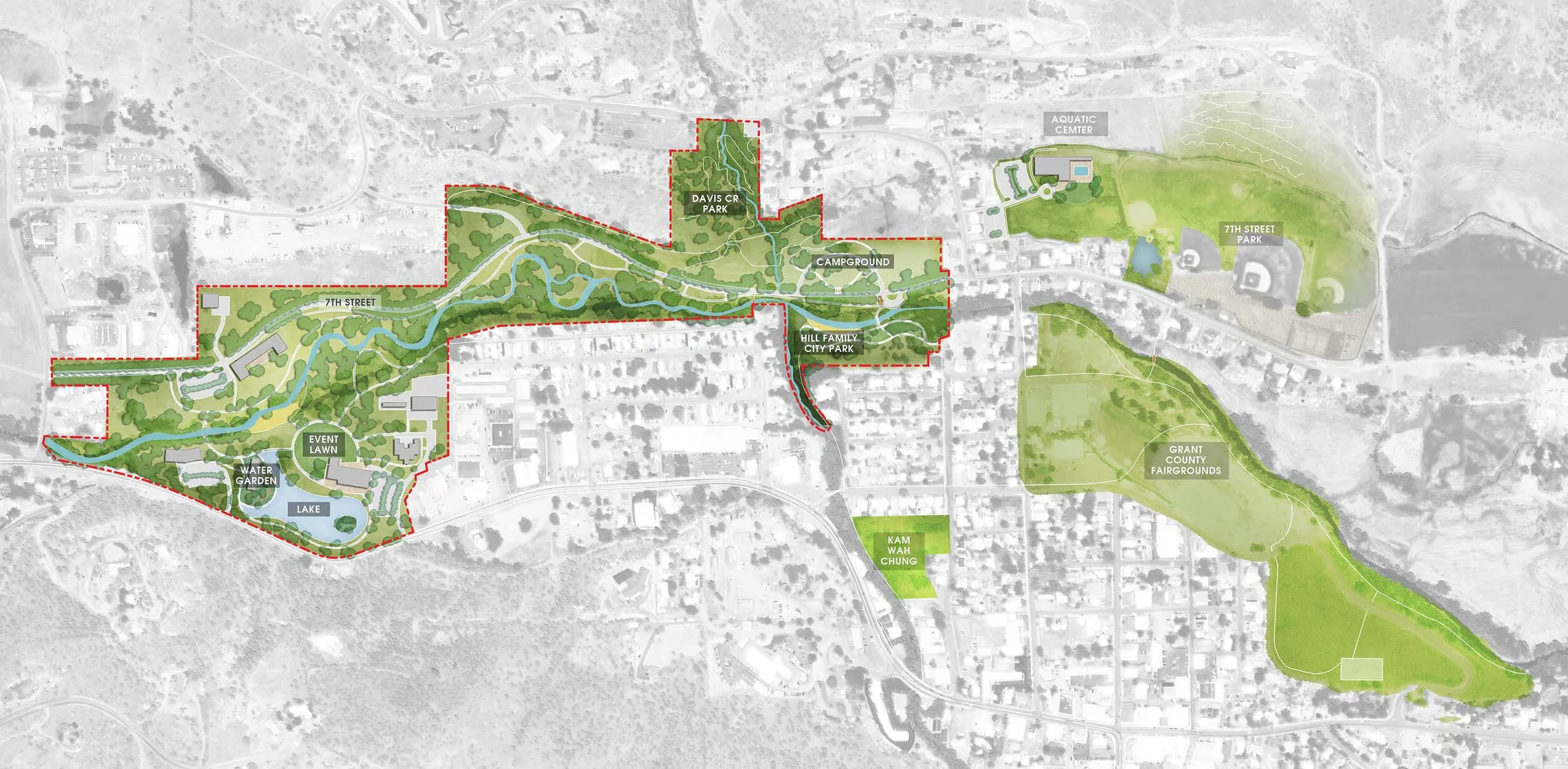Recreation and Revitalization in John Day
By Ken Pirie and Nick Green
Introduction: Recreation in Oregon
Oregon is endowed with an incredible array of recreational opportunities. 53% of the state’s land base is managed as federal public lands. Most of these public lands are accessible to the public and provide many opportunities for hiking, biking, camping, boating, hunting and fishing. Oregon also has an extensive system of state parks and a strong set of environmental and land use regulations that protect sensitive habitat in and adjacent to public lands. These lands are cherished by Oregon residents and visitors, particularly for recreation and the most recent statewide survey of recreational activity preferences showed 95% of Oregonians participated in at least one outdoor recreation activity in the State during the past year. The top outdoor activity was the simplest—walking on trails and paths. Another study, focusing on ‘Cost of Illness’, calculates that healthcare-related savings to Oregon from this participation in outdoor recreation is over $1.4 billion annually. Finally, there is a tangible economic benefit, with the total net annual value for recreation participation in Oregon estimated to be $54.2 billion. Of this, walking accounts for $4.5 billion, bicycling for $3 billion and fishing for $2.2 billion. Many smaller communities in Oregon recognize the potential benefits in attracting a greater share of this recreation participation investment and are creating opportunities to capitalize on their proximity to public lands, which also aids in broader community revitalization efforts.
John Day: A Base Camp for Recreation
The City of John Day is a historic ranching, mining, and timber community nestled in the mountains of eastern Oregon. The City is located in a remote and sparsely populated area, roughly a 5-hour drive east of Portland, and a 3-hour drive west of Boise, the largest nearby population centers. The community is surrounded by over two million acres of national forest and public lands. This includes more than a dozen state and federal parks, heritage sites and recreation areas including the historic Kam Wah Chung Store, the Strawberry Mountains Wilderness, and the John Day Fossil Beds National Monument. Three decades of steady population decline and the disruption to the natural resource economy in the 1990s have left the City struggling economically.
John Day, Oregon in context
Major economic, demographic and cultural shifts are not new for this area. Northern Paiute Native Americans occupied the John Day valley and surrounding high desert for thousands of years – traveling as they lived off the land and settling in large winter camps close to what are now protected watersheds for ESA listed Mid-Columbia summer steelhead, Bull trout, and state sensitive species that include Pacific lamprey, Chinook salmon, and Westslope cutthroat trout. Cultural changes accelerated in the mid-1800s as non-native pioneers, explorers and miners moved to the area. Conflicts over land, water and food resources ultimately led to the creation of the Malheur Reservation – where tribal members were encouraged to assimilate non-native practices for farming, ranching and trades like blacksmithing. Dissatisfaction with their living conditions led to further tension with the new settlers and ultimately resulted in open conflict and the relocation of many tribal members 350 miles north to the Yakima Reservation. Like other forced marches, many lives were lost as a result of this forced displacement.
In the midst of these cultural shifts, a large influx and Chinese immigrants settled in the John Day Valley. Gold was discovered in Canyon City, three miles south of present John Day, in 1862. By 1885, the Chinese population was approximately 2,000, making it the third largest Chinatown in the United States at that time behind San Francisco and Portland. Further immigration of pioneers looking for land to homestead resulted in an amalgamation of tribal members, new-world and old-world immigrants living side by side in John Day, with nearly 10,000 people at its population peak. Eventually ranching and timber came to dominate the economic landscape, celebrated in events like the annual Timber Truckers light parade held each December and the historic cattle drives down John Day’s Main Street.
Today, ranchers, farmers and tribal members are working closely with the City of John Day to once again create opportunities for a culturally-diverse community to thrive. The extensive nearby recreational offerings, including hunting, fishing, backpacking, camping, road and mountain biking and more present an opportunity to attract new visitors, while enhancing the quality of life for existing and potential new residents. For example, hunting, fishing and wildlife viewing are calculated to bring over $11 million into the local economy annually.
Visitors arrive in various ways and have a variety of overnight and stay options. This includes hunters coming in on private planes. However, with limited lodging and dining options in John Day there is little to encourage them to stay longer. There are also some higher-end destinations such as Silvies Valley Ranch—a luxury guest ranch and spa (featuring a 36-hole reversible golf course with goats as caddies…). The state tourism agency, Travel Oregon has effectively highlighted some of the more active recreation opportunities by designating scenic bike routes and marketing to residents in Portland. The state’s marquee road cycling event, Cycle Oregon, was set to begin a weeklong tour of the region with thousands of cyclists expected at the kick-off in John Day before cancellation due to COVID-19.
A Vision for Economic Redevelopment and Resilience
The City of John Day and Grant County have experienced a number of socioeconomic problems including the highest unemployment rate in Oregon. Low real market property and assessed values led to struggles in finding sufficient revenue to fund basic public services. John Day’s population, which peaked in the 1990s, is now at 1970s levels. Residents report they are primarily white with a median age of 41. The John Day & Canyon City Income Survey (2018) found the most common response to the question “Which of the following best describes your family’s total gross income, before taxes, for the previous 12 months?” was less than $29,900. Over 57 percent of the population lives in low-to-moderate income households.
Led by a new City Manager, Nick Green, the City developed a strategy to reverse the pattern of population and economic decline. John Day’s Strategy for Growth was adapted from a Price Waterhouse Cooper approach called Fit for Growth, which modeled how the world’s top companies become leaner, stronger, and more ready for growth.
This business-centric approach to local governance was broadly supported by the city council and the local population who are seeing action after decades of stasis. The City’s strategy treats residents like customers who have a choice about where they live and work. The strategy also includes an understanding of and sensitivity to John Day’s traditional values and culture, and expresses a desire to grow in a balanced way to preserve the rural lifestyle and quality of life. The strategy, termed the “Innovation Gateway Project” also acknowledges the community’s desire to have access to the area’s wide range of regional recreational activities. The strategy focuses on recruiting and retaining three core demographics:
Digital commuters who have a choice about where they work;
Active retirees with disposable income; and
Young, working families that contribute to the local economy and tax base.
Attracting these demographics will result in a more diversified and more resilient economy and will promote growth in supporting infrastructure and agencies, including the local hospital and schools. Attracting them will also require the City to differentiate itself from other communities, leverage grant funding and other incentives and focus future investments in four main areas:
Recreational amenities that make for attractive, active-lifestyle communities;
Digital marketing and branding that promotes the rural quality of life;
Competitive broadband infrastructure enabling residents to be digitally connected to friends, family and coworkers; and
Housing and community development initiatives that create more housing options across a wider and more balanced price range with associated community spaces.
The Innovation Gateway Concept
The City spearheaded the Innovation Gateway Project to accomplish its revitalization strategies. The project is an award-winning integrated community development, transportation and design plan. The Innovation Gateway Area Plan, adopted in November 2019, received the League of Oregon Cities 2019 Award for Excellence, the top planning award given to any community in the state. The Plan envisions the revitalization of the former Oregon Pine mill site and adjacent riverfront properties as a dynamic and welcoming public space at the western gateway to the city.
The John Day River is the cohesive element weaving the Innovation Gateway together. The river and adjacent floodplain areas flow through the city and have been heavily impacted by past and current land uses, including gold dredge mining and urban development. The project conceptualizes the possibility of improving some of the river-related functions and features including steelhead habitat restoration, and recreational access for bird watching, fishing, swimming and floating. New public trails already wind through restored habitat along the riverbanks creating the connections necessary for a wide range of new land uses.
The plan also includes a bold vision for the use of reclaimed wastewater. An ageing and failing concrete wastewater treatment plant along the river will be decommissioned. The land it occupies, which includes percolation ponds that indirectly discharge to the river, will instead provide space for riparian re-naturalization and a proposed campground. This new campground will provide urban campsites for visitors in peak season when a nearby state park and the county fairground are full. A new compact hydroponic treatment plant will be built with the help of state and federal grants. Over 80 million gallons of wastewater will be treated and directed to irrigate park areas and cash crops grown in nearby municipal greenhouses. The first three of these greenhouses are now operational, selling produce to local restaurants, residents and the city’s sole grocery store. This suggests another potential type of visitor for the region to pursue, those interested in learning about food production, Grass-fed beef production from nearby ranches and other agri-tourism possibilities could be closely tied into recreation marketing efforts.
The anticipated program for redevelopment emphasizes public amenities that bring the John Day community and visitors together to the former mill site. Relic structures from the mill will be renovated to host events such as farmers markets, classes and community events. Interpretive displays will communicate the history and identity of John Day. The mill site will serve as a hub of recreation with a beach for swimming, tubing and small boat access. A lawn adjacent to a renovated mill shed will allow for a variety of events, such as food and beverage festivals, movie nights, concerts, and fairs. A new 60-room hotel is also proposed. The Inn at Whiskey Flat, would be named for the first placer mine and gold discovery in the 1860s and will become the largest hotel in John Day. The hotel will feature a 250-person event center, distillery and eatery at the adjacent sawmill, all developed under a public-private partnership with the land and site development cost underwritten by the City.
Urban Renewal and Main Street Revitalization
John Day has also launched an aggressive urban renewal and Main Street revitalization campaign to complement its investments in recreation and tourism. The City offers one of the nation’s best incentive programs for new home construction. A 7% cash back rebate on every new home built in the city and full payment of the City’s system development charges is provided. This garners a net savings of 10-11% on new home construction. The incentive is also offered for major renovations of existing homes with an increase to 15% for these improvements.
The City has also acquired 100-acres of land along the John Day River and several downtown properties to open up a 20-year land supply for new housing, commercial and industrial growth as part of its revitalization efforts. The City is in the process of developing a 14-acre industrial park and over four miles of road and bridge improvements to set the stage for future expansion. John Day was one of only ten communities nationwide to receive the EPA’s 2019 Recreation Economies for Rural Communities planning assistance grant to help spur the outdoor recreation economy. This grant helps position John Day’s Main Street as a basecamp for recreation in the region. The City was also awarded Touchstone Energy Cooperative’s 2019 Creative Placemaking award to help launch the rural renaissance in John Day by investing in arts and culture throughout the community.
Integrated Park System
The local Parks and Recreation District currently manages the parks in John Day. This portfolio includes a ballfields complex, an adjacent new mountain bike trail park, and a pool facility which is over 60 years old and open only 12 weeks per year. A survey of county residents indicated strong public support for a new aquatics center and more outdoor recreational opportunities. A new aquatic center has been designed for a site adjacent to the ballfields and will be reviewed by voters later this year. Ultimately, if the new center is built, Oregon Parks and Recreation is interested in building a new interpretive facility at the existing pool site next to the Kam Wah Chung store. The store is one of only 17 national historic landmarks in Oregon with visitation from China and Europe annually. This Heritage Tourism jewel is a uniquely preserved Chinese herbal apothecary and general store dating to the 1870s.
To build on this core of parks facilities, a 10-acre parcel was acquired, incorporating the Davis Creek ravine which flows into the John Day River. This new open space and trail system provides access to an overlook with dramatic views of the city and mountain ranges to the south. Several acres along the south side of the river will become the new Hill Family City Park. The County Fairgrounds also located on the south side of the river will be connected with new trails and planning is proceeding to determine other potential recreational improvements. This upgraded park system, an integral part of the Innovation Gateway, is a place-making approach to improve the overall health of the community, and to provide ready access to residents and visitors alike to the John Day River. It creates access to parks for under-served and economically distressed neighborhoods and creates access to multiple recreation sites for kids, while avoiding surface streets.
The Innovation Gateway strategy in its entirety will help revitalize the City of John Day. This Strategy creates a destination for visitors and residents and reinforces the city’s position as a regional hub for a wide range of outdoor recreation activities. These improvements offer significant public investments for John Day’s future. This Strategy supports the City’s initiatives to maximize innovation and efficiency, build partnerships, and spur a sustainable and resilient economy. This new economy will retain and attract a range of residents and businesses to John Day. Maybe most importantly, at the end of the day, this Strategy honors the culture and intrinsic qualities that make John Day such a special place.
About the Authors
Ken Pirie is an urban planner with 25 years of professional experience. Ken has carved out a unique niche as a leading physical planner in the Northwest, bringing a place-based approach to projects that blend urban and natural environments. His projects have been recognized with APA awards, acknowledging the substantial impact of his work on subsequent development and community-building. In Ken’s work on urban design, waterfront, campus and park master planning projects with Walker Macy Landscape Architects and Planners, he seeks to ensure that a respect for ecology, history and local culture results in enduring plans that are rooted in the landscape.
Nick Green is the City Manager for the City of John Day. His focus is on increasing John Day's growth rate by stimulating private and public sector investment. He has an MPA from the Evans School of Public Policy and Governance at the University of Washington, with a Bachelor of Science in Microbiology from Brigham Young University. Prior to joining the city, Green worked as a consultant and program manager for Booz Allen Hamilton and Jacobs Engineering and as an intelligence officer with the Defense Intelligence Agency.



